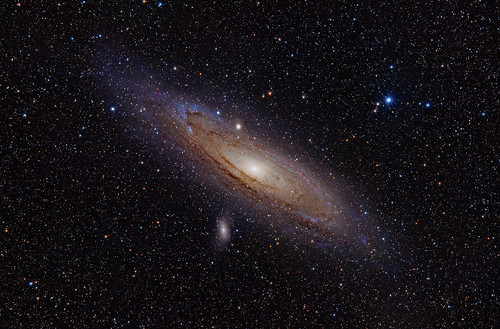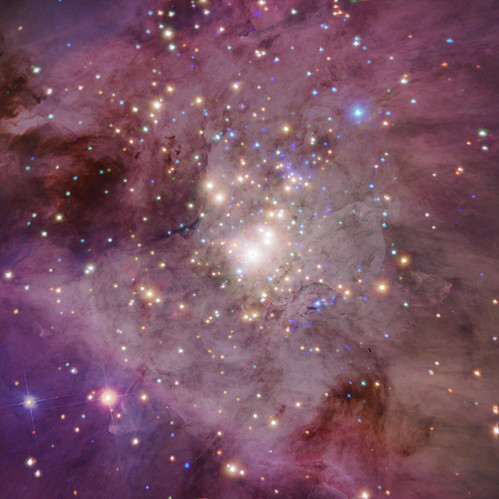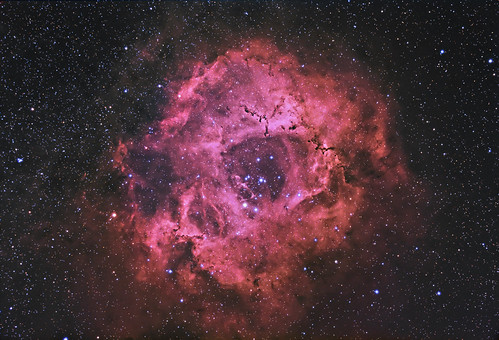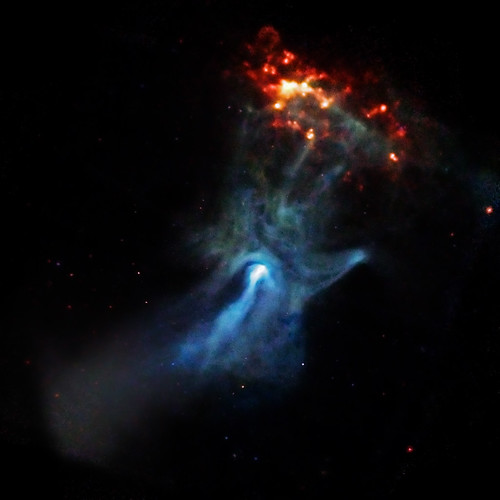| | |
 | | Andromeda, again. | by makelessnoise on Flickr |
| The Andromeda Galaxy is a spiral galaxy approximately 2.5
million light-years away in the constellation Andromeda.
A galaxy is a group of billions of stars and their planets, gas, and dust that extends over
many thousands of light-years and forms a unit within the universe.
|
 | | Free space fantasy universe time warp pulsar texture for layers | by Pink Sherbet Photography on Flickr |
|
|
- A pulsar is a rapidly rotating neutron star which
emits large amounts of electromagnetic radiation (light, x-rays, radio waves, etc.)
and particle jets.
- A neutron star is
what is left over when a star 4 - 8 times the mass of our sun burns up most of
its fuel and explodes in a supernova.
- The outer
layers of the star shoot outwards rapidly, while the stellar core collapses to a
sphere approximately 20 km in diameter.
- Some neutron stars do not rotate very
rapidly but those that do are known as pulsars.
|
|
 | | M31, the Andromeda Galaxy (now with h-alpha) | by write_adam on Flickr |
| |
 | | nebula region in Cassiopeia | by write_adam on Flickr |
| - A nebula is a cloud
of gas and dust in space.
- Some nebulas are regions where new stars are being
formed, while others are the remains of dead or dying stars.
- Nebulas come in
many different shapes and sizes.
- There are four main types of nebulas: Planetary nebulas, Reflection nebulas, Emission nebulas, and Absorption nebulas.
- The word nebula comes from
the Latin word for cloud.
|
 | | Orion Nebula: Peering into the Orion Nebula | by Smithsonian Institution on Flickr |
| |
 | | Rosette nebula reprocessed | by write_adam on Flickr |
| |
| - In astronomy, the Pleiades,
or Seven Sisters (Messier object 45), is an open star cluster
containing middle-aged hot B-type stars
located in the constellation of Taurus.
- It is among the nearest star clusters to Earth and is
the cluster most obvious to the naked eye in the night sky.
|
 | | Helix Nebula | by jimkster on Flickr |
| The Helix Nebula is an example of a planetary nebula, or 'planetary' formed at the
end of a star's evolution. |
 | | NGC 3576: Massive Stars Revealed by Chandra | by Smithsonian Institution on Flickr |
| |
 | | IC443, the Jellyfish nebula in HaRGB | by write_adam on Flickr |
| |
 | | Eagle Nebula | by jimkster on Flickr |
| |
 | | The Great Orion Nebula | by jimkster on Flickr |
| |
 | | Westerlund 1 (A dense cluster of young stars about 16,000 light years from Earth.) | by Smithsonian Institution on Flickr |
| |
 | | Rosette Nebula: Scientists Find X Rays from Stellar Winds That May Play Significant Role in Galactic Evolution (A star-forming region 5,000 light years away in the constellation Monoceros.) | by Smithsonian Institution on Flickr |
| |
 | | Star trails | by ComputerHotline on Flickr |
| |
 | | A Young Pulsar Shows its Hand | by Smithsonian Institution on Flickr |
| A young pulsar
It looks like a hand!
|
 | | A Black Hole in Medusa's Hair: A galaxy lies about 110 million light years away. | by Smithsonian Institution on Flickr |
| A Black Hole
This is what is left after a star dies.
|
 | | falling star | by realSMILEY on Flickr |
| |
 | | Kepler's Supernova Remnant: A Star's Death Comes to Life | by Smithsonian Institution on Flickr |
| |
 | | Abell 1689: A Galaxy Cluster Makes Its Mark (A galaxy cluster at a distance of about 2.3 billion light years from Earth.) | by Smithsonian Institution on Flickr |
|
A galaxy cluster that is 2.3 billion light years from Earth! |
 NeoK12.com - Educational Videos, Lessons, Quizzes & Presentations
NeoK12.com - Educational Videos, Lessons, Quizzes & Presentations


















